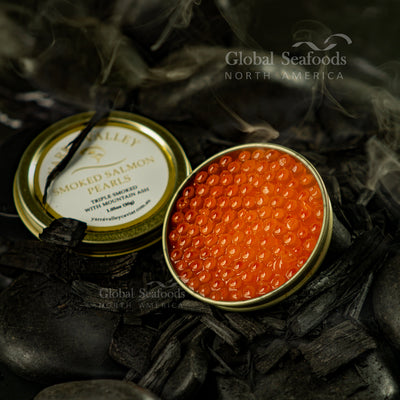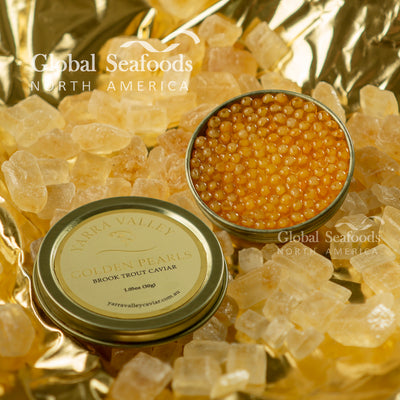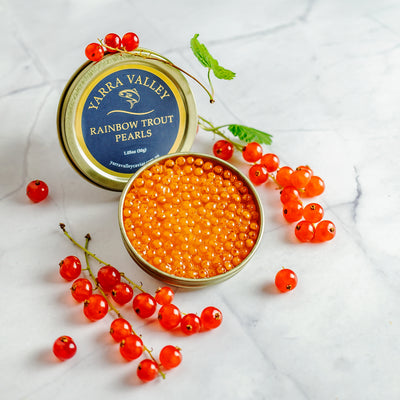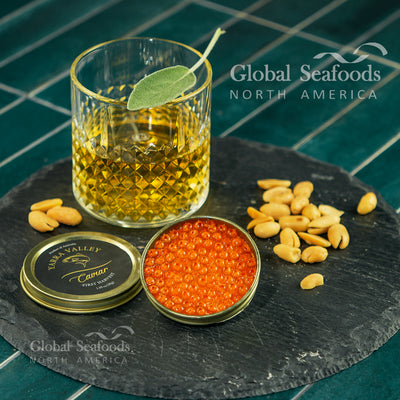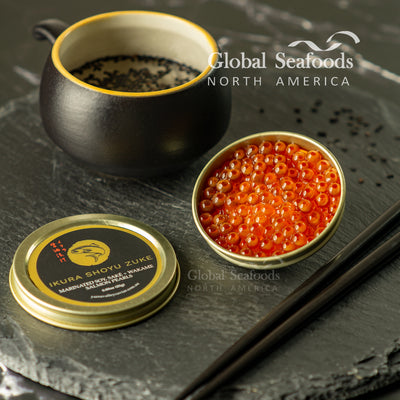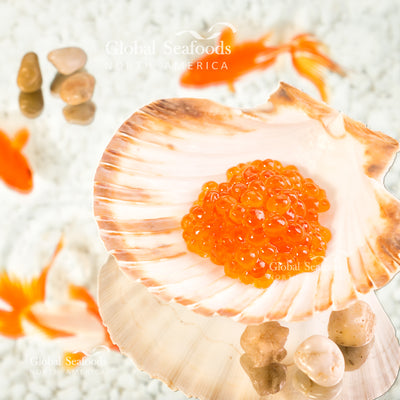How to Store Red Caviar Properly – Freshness, Freezing & Best Practices

How to Store Red Caviar Properly – Freshness, Freezing & Best Practices
Red caviar, also known as salmon caviar, is a luxurious delicacy with a rich, briny flavor and vibrant orange-red hue. Whether it's chum salmon caviar, coho salmon caviar, or trout red caviar, proper storage is essential to maintain its freshness, texture, and nutritional benefits.
In this comprehensive guide, we’ll cover:
- The best methods for storing red caviar
- The differences between fresh, frozen, and canned red caviar
- How long each type of red caviar lasts
- Tips to preserve flavor and quality
By following these storage practices, you can extend the shelf life of your red caviar and enjoy its premium taste in every bite.
What is Red Caviar?
Red caviar refers to the roe of salmon species, known for its large, glistening beads that burst with a briny, slightly sweet flavor. It is widely used in gourmet dishes, sushi, blinis, and canapés.
Types of Red Caviar
There are different varieties of red caviar, each offering unique flavor and texture:
- Chum Salmon Caviar – Large, bright orange pearls with a mild, buttery taste. Try it here.
- Coho Salmon Caviar – Slightly smaller eggs with a robust, briny flavor. Order coho caviar.
- Trout Red Caviar – A smaller, poppy texture with a strong umami taste. Explore trout caviar.
- Pink Salmon Caviar – Mild in flavor with medium-sized beads. Check pink salmon caviar.
How to Store Red Caviar for Maximum Freshness
The way you store red caviar depends on whether it is fresh, frozen, or canned. Proper storage ensures that your caviar maintains its delicate texture and refined taste.
Fresh Red Caviar Storage
- Temperature: Store fresh caviar between 28°F to 32°F (-2°C to 0°C) in the coldest part of your refrigerator.
- Shelf Life: Fresh caviar should be consumed within 2-3 days after opening.
- Storage Tips: Keep the caviar sealed in its original container or transfer it to an airtight glass jar. Avoid metal containers as they can alter the taste.
Frozen Red Caviar Storage
- Can You Freeze Red Caviar? Yes! Freezing can extend red caviar’s shelf life without significantly affecting its nutritional value.
-
Best Freezing Method:
- Use a vacuum-sealed bag or airtight glass container to prevent freezer burn.
- Store at 0°F (-18°C) or below for up to 6-12 months.
-
Thawing Red Caviar:
- Transfer frozen caviar to the refrigerator and let it thaw overnight.
- Never refreeze thawed caviar, as it loses its delicate texture.
Canned Red Caviar Storage
- Unopened Canned Caviar: Store in a cool, dark pantry at room temperature.
- Opened Caviar: Transfer leftovers to a glass container and refrigerate for up to 7 days.
- Shelf Life: Due to added preservatives, canned red caviar lasts longer than fresh or frozen varieties.
Note: Canned caviar often contains preservatives, allowing for a longer shelf life. However, fresh and frozen red caviar offer a purer taste.
How to Keep Red Caviar Fresh After Opening
Once opened, red caviar should be handled with care to maintain its delicate flavor and quality.
Key Tips for Preserving Opened Caviar
✅ Use an Airtight Container – Store in a non-metallic container to prevent flavor alteration.
✅ Cover with Plastic Wrap – Place a layer of plastic wrap directly on the caviar before sealing to reduce air exposure.
✅ Refrigerate Immediately – Keep at 28°F to 32°F (-2°C to 0°C) and consume within 2-3 days.
✅ Use Non-Metallic Utensils – Avoid metal spoons; instead, use wood, glass, or plastic utensils to prevent oxidation.
✅ Avoid Direct Light & Heat – Exposure to light and high temperatures can spoil red caviar quickly.
Common Questions About Storing Red Caviar
1. Can you freeze red caviar?
Yes! Freezing extends the shelf life of red caviar for up to 12 months if properly sealed.
2. How do I know if my red caviar has gone bad?
Signs of spoiled caviar include:
❌ Strong, fishy odor
❌ Discolored or dull eggs
❌ Slimy or mushy texture
3. How long does fresh red caviar last?
Unopened fresh caviar lasts up to 4 weeks in the fridge. Once opened, it should be eaten within 2-3 days.
4. What’s the best way to serve red caviar after storage?
Take caviar out of the refrigerator 10-15 minutes before serving for optimal taste. Do not leave it at room temperature for too long, as it can spoil.
5. Is canned red caviar as good as fresh or frozen?
Canned caviar lasts longer due to preservatives, but fresh and frozen red caviar offer superior taste and texture.
Where to Buy High-Quality Red Caviar
Looking for premium red caviar? Get the freshest salmon caviar from trusted sources like Global Seafoods.
Top Red Caviar Products to Try
🔹 Chum Salmon Caviar (Soft Shell)
🔹 Coho Salmon Caviar
🔹 Trout Red Caviar
🔹 Premium Red Caviar
🔹 Pink Salmon Caviar
For more seafood tips and product updates, subscribe to Global Seafoods on YouTube.
Conclusion
Properly storing red caviar preserves its luxurious flavor, delicate texture, and nutritional benefits. Whether fresh, frozen, or canned, following these best practices ensures the best quality in every bite.
Key Takeaways:
✔ Fresh caviar should be refrigerated and consumed within 2-3 days after opening.
✔ Frozen caviar lasts up to 12 months, but should be thawed slowly in the fridge.
✔ Canned caviar has a longer shelf life due to preservatives but should be refrigerated once opened.
✔ Always store caviar in an airtight, non-metallic container to prevent spoilage.
By following these storage tips, you can enjoy red caviar at its peak freshness, making every meal a gourmet experience.
Looking for the best red caviar online? Explore premium-quality options at Global Seafoods.
Also in News

How to Make Sea Bream Sushi With Dry-Aged Tuna & Crab Roll — Step-by-Step With Chef Joshua
A complete guide to making Sea Bream sushi at home, including filleting, curing, slicing, and building a Dry-Aged Tuna & Crab sushi roll. Chef Joshua shares professional tips for restaurant-quality results.

The Boiled Crab in Popular Culture: From Cajun Cuisine to Trendsetting Restaurant Phenomenon
From spicy Cajun-inspired seafood boils to hands-on dining experiences, The Boiled Crab has left a unique mark on popular culture. Discover its cultural roots and culinary influence.

Boiled Crab for Game Night: Everything You Need for a Perfect Seafood Party
Take your game night to the next level with a Boiled crab party. Learn the best recipes, cooking tips, and hosting hacks for a memorable seafood feast.



